Genre: Action Developer: Core Design Publisher: Eidos Interactive/Sega (PAL) Players: 1 Released: 1996
Being my principal fascination as a teenager, the original Tomb Raider was, in my mind, as legendary as the age-old Scion itself. Enthralled by the twists and turns of Peruvian caves, the rocks and ruins of an ancient Egypt, it was impossible for me to see through the design of the game because I’d already fully embraced it. Like rock gods and method actors,Tomb Raider wielded a kind of authority that I accepted, at the time, without question. It was only many, many years later when I finally saw the game for what it was.
The now-famous franchise debuted on Sega Saturn. This was in PAL regions, where Sega published the game in exchange for a month of exclusivity. In North America, the game appeared on Saturn, Sony PlayStation and MS-DOS simultaneously. The deal, pretty paltry by today’s standards, probably didn’t help shift many Saturn units, but it’s telling of the relationship between Sega and developers Core Design. Core had numerous hits on the Mega Drive/Genesis and was among the biggest third-party supporters of the Sega/Mega CD (it even launched a title for the 32X). In the early days of the 32-bit era, Core’s allegiance to Sega showed no sign of flagging, and its Saturn games are some of the most fascinating on the system.
Tomb Raider begins with an ambitious FMV sequence. The first half – an explosion in New Mexico, a strange artefact launched into the sky – is a little clunky on a narrative level, but the cinematic techniques and special effects are surprisingly forward-thinking for the era. The second half, where adventurer Lara Croft converses with the arrogant Larson and a mysterious businesswoman called Natla, has punchy back-and-forth dialogue and strong, if stereotyped voiceovers. A third FMV, which begins when you start a new game proper, offers a breathtaking glimpse of a Peruvian mountain range, and some Indiana Jones-style action leading up to the death of Lara’s guide. Its biggest misstep today isn’t the lack of detail and clunky animations, but that it shows the player such a vast open space that they can’t actually explore.
On a mechanical level – specifically the camera and control scheme – Tomb Raider lives and dies by consistency. Make no mistake about it; even as the game encourages you to misjudge jumps, flattens you under boulders or sets you on fire because you were too early or too late to move, every single button works exactly as it’s supposed to, every single time. The camera is permanently fixed behind Lara at a fixed distance, except during a few fleeting moments when it cuts to a point of interest or pulls back to show the spectacular scale of a room. Holding the L button makes Lara walk, so it’s impossible to fall from any platform. This safeguard is always available and provides players a choice: speed or safety. In the many years since release, many newcomers have dismissed the tank controls, but they’re missing the point: the beauty about navigation in Tomb Raider is that it’s only as sluggish or as elegant as you make it. Even an average speedrunner can demonstrate just how smoothly Lara moves when she’s in the right hands.
Tomb Raider is a platformer first and foremost, a puzzle game second, and a shooter third. In some ways, it was ahead of its time. Its extended scene traversal is still emulated today, even if the learning curve and penalty for failure are no longer quite so high. Strictly speaking, Tomb Raider has only a handful of genuine puzzles. The reality, though, is that huge chunks of levels – sometimes even whole levels – are themselves navigational puzzles. In this way, Tomb Raider blends demanding platform sequences with the brain-teasing question of “how do I get there?” Every jump becomes a calculated risk, because a) it might not take you to where you need to go, and b) it might kill you. With spike pits in Peru, crumbling floors in Rome, slippery slopes in Egypt and fiery pits in Atlantis, Tomb Raider usually allows just enough margin for error, but only if you have your wits about you – and quick reflexes.
If Tomb Raider excels anywhere, it’s in this synergy of puzzle-platforming. Each environment is rendered beautifully on Sega Saturn, with gritty textures and sombre colours that fully realise the mood of Lara’s world. Side-by-side, the visuals are cleaner on both MS-DOS and Sony PlayStation, but they’re also strangely brighter, as if every surface has been illuminated by a lightbulb. Sadly, this is where favourable comparisons end, at least for PAL regions: sound quality is reduced and suffers occasional crackling; there’s more glitches, although none of them are game-breaking; and there’s just a general lack of polish, with every indication that the PAL release was rushed to make good on Sega and Core’s one-month exclusivity deal. Performance is the biggest offender, with moderate slowdown during some combat encounters and within larger areas. It’s never unplayable, but always disappointing. The Saturn could have handled it, and Core could have pulled it off. It’s possible, then, that the timed-exclusivity deal backfired on both parties, with Sega losing out on the definitive version of the game.
Combat by itself was never a standout feature in Tomb Raider. Hit the C button and Lara draws her weapons. If there’s an enemy around, she’ll automatically aim at it. Hold the A button to shoot it until it dies. On paper, this is how all hostile encounters play out, and you’d be forgiven for thinking that it doesn’t sound very interesting. The reality is that combat isn’t always so simple: the enemies Lara encounters will be running, climbing and flying towards her, making it important to move quickly, track carefully, and choose your weapon wisely. Lara’s trademark dual pistols have unlimited ammo, but they become a liability about a third of the way through the game. The shotgun, Uzis and magnums each have the typical strengths and weaknesses you’d expect, but your only ammunition for them is what you can salvage in the game world. On its own, it’s true that combat isn’t terribly exciting, but when merged with the overarching puzzle-platforming design, it takes on an almost tactical edge: another piece of the navigational puzzle.
The seamless integration of running, jumping, shooting and swimming forms a mechanical harmony of which many other games of the era could only dream. But in terms of actual content, Tomb Raider is one of the least deliberate games I’ve ever played. A defining moment for anyone familiar with the game takes place in the third level, the Lost Valley. Lara dives from the top of a waterfall, shoots some wolves, climbs some rocks and emerges into a wide-open jungle. Out of the dark fog ahead, a red reptile rushes at you: a velociraptor. A second one soon follows, and then you see the bridge: broken at the middle, as if something large smashed into it. A few steps further and it finally happens: composer Nathan McCree’s terrific music starts up, the screen begins to shake and a Tyrannosaurus Rex turns the corner, roaring at Lara with huge polygonal jaws. It’s an iconic moment (that scared the daylights out of me when I first saw it), but from a purely design perspective, it doesn’t make sense. It’s not the climax of the game, which isn’t due for another twelve levels. It’s not the climax of the Peru quarter of the game, and it’s not even the climax of the Lost Valley level itself. It’s this kind of structural randomness that makes the game so surprising to play through, even today; and even when the surprises don’t always make sense. In the central chamber of level five, St Francis’ Folly, one of the many rooms that must be explored is named after Thor – a Thor room among ancient Roman ruins, because the prospect of lightning orbs and giant hammers is perhaps more satisfying than mythological accuracy. In Atlantis, an Uzi-toting henchman comes at Lara with an almost-quote from Scorcese’s Taxi Driver (“You firin’ at me? You firin’ at me? There ain’t nobody else here so you must be firin’ at me!”). And he skates towards you. He’s an Uzi-toting henchman on a skateboard.
So much content in Tomb Raider presents itself without rhyme or reason. This is what makes it so difficult to predict the dangers lurking around the next corner: bats or mummies or lions or a mute Frenchman. Tomb Raider puts its own Sphinx in a dark cave several hundred feet below ground. It presents Atlantis not as an island but some kind of grotesque organic structure, with veiny walls and pulsating corridors reminiscent of some Cronenberg body horror flick. It slaps you with the unlikely scenario of dinosaurs running around modern-day Peru for no reason at all but the thrill of it… and it succeeds. Somehow, this strange mix of elements just works. Tomb Raider isn’t a game that’s been focus-tested into oblivion, and this is its most enduring strength, in 1996 and today.
Tomb Raider has not aged as gracefully as others of its era, including its sequels, and for performance hiccups alone, the Saturn version is not the best place to experience Lara’s original outing. But the game has earned its place in history, and whatever system it’s played on, it still has the ability to surprise new gamers and captivate the old. Tomb Raider was Core Design’s biggest success story, even if the franchise would eventually lead to the studio’s downfall. And while it couldn’t save the Saturn, it’s always a pleasure to witness one of the earliest examples of 3D gaming on the system, in all its beautiful flaws.
Score: 8 out of 10.

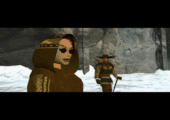
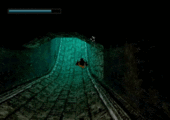
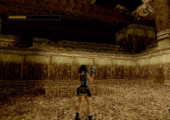
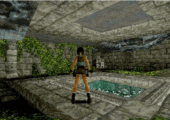
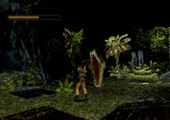
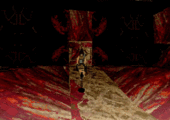
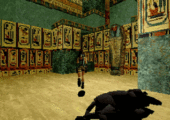
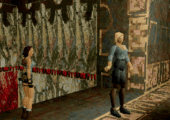

Recent Comments